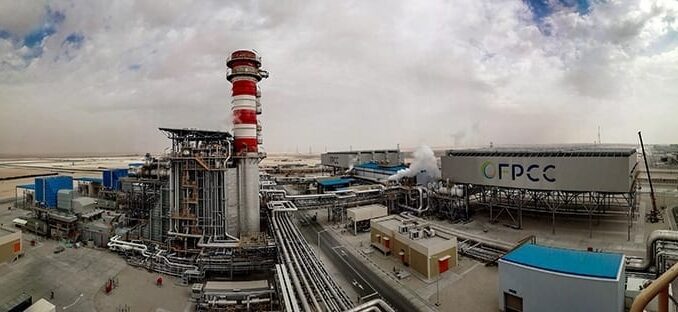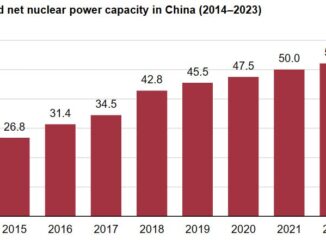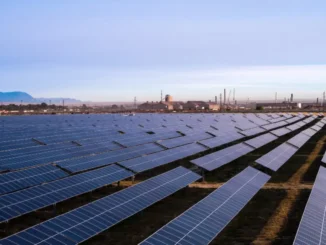
In a bold move signaling robust growth in the energy sector, Mitsubishi Heavy Industries Ltd. (MHI) has announced plans to double its gas turbine production capacity over the next two years. This decision comes amid surging global demand for gas turbines, fueled by the need for equipment replacements and the rapid expansion of data centers worldwide. Initially, MHI had targeted a 30% capacity increase, but escalating orders have prompted a more aggressive expansion to keep pace with market needs.
The company is prioritizing efficiency improvements in its production chain, even as costs for materials, supplies, and staffing have nearly doubled.
Are you Paying High Taxes in New Jersey, New York, or California?
Natural gas turbines are increasingly seen as a reliable, cleaner alternative to coal-fired power and a more feasible option than nuclear energy in many regions. This positions them as a key enabler for new manufacturing facilities and broader electrification efforts. MHI’s strategy reflects a broader industry trend where gas turbines play a pivotal role in supporting stable energy supplies amid the transition to renewables.
Recent Earnings Performance Highlights Growth Trajectory
MHI’s latest financial results underscore the company’s strong position. For the first quarter of fiscal year 2025 (ended June 30, 2025), MHI reported consolidated order intake of 1,768.6 billion yen and revenue of 1,193.6 billion yen, marking a 7.4% year-over-year increase.
Business profit surged by 24.7% to a notable level, with some segments showing even higher growth rates, such as a 61% increase in certain profit metrics.
Earnings per share came in at $0.14, beating analyst estimates by $0.02.
Looking back at the full fiscal year 2024 (ended March 31, 2025), revenue reached 7,071.2 billion yen, up 5.8% from the prior year.
These figures highlight MHI’s resilience and ability to capitalize on demand in its energy division, which includes a substantial 5.3 trillion yen order backlog.
The company’s shares rose as much as 2.5% following the capacity expansion announcement, contributing to positive momentum in Japan’s Topix Index.
Manufacturing Expansion: Key Locations and Strategies
MHI handles the full spectrum of gas turbine development, design, manufacturing, and construction primarily in Japan, making it the only Japanese firm with such end-to-end capabilities.
Core production occurs at facilities like the Takasago Machinery Works, where advanced models incorporating cutting-edge technologies are developed.
To support global demand, MHI is leveraging international partnerships and facilities. In China, joint ventures such as Mitsubishi Heavy Industries Dongfang Gas Turbine (Guangzhou) Co., Ltd., and other entities like Mitsubishi Power (Hangzhou) Environmental Equipment Co., Ltd., play a role in production and supply.
Recently, MHI placed an order for 150 gas turbines from China’s Dongfang Turbine, indicating a collaborative approach to scaling output.
In the Americas, Mitsubishi Power Americas has its headquarters in Lake Mary, Florida, with additional presence in South America.
While the exact locations for the doubled capacity weren’t specified in recent announcements, the focus is on optimizing existing supply chains globally to avoid heavy new investments, given the cyclical nature of turbine demand.
Export Markets: Broad Global Reach
MHI has established itself as a leading exporter of gas turbines, having delivered over 1,500 units to more than 30 countries.
Key export regions for gas turbine combined cycle (GTCC) power plants include Southeast Asia, the Middle East, Europe, and North America, covering about 20 countries in these areas.
Specific recent examples highlight this footprint: MHI is supplying turbines for a 1.6-GW gas-fired plant in Brazil and has secured orders for turbomachinery in Russia’s Ust-Luga LNG project.
The company’s global network supports exports to diverse markets, positioning it among the top gas turbine manufacturers alongside GE Vernova and Siemens Energy.
Investor Outlook: A Promising Opportunity?
This capacity expansion appears highly favorable for investors. The surge in demand, particularly from data centers and energy transitions, could accelerate growth in MHI’s energy segment beyond consensus forecasts.
With a massive order backlog and solid Q1 FY2025 results showing revenue and profit gains, MHI is well-poised to capture market share. Analysts note that even potential shifts in data center energy needs won’t dampen overall turbine demand significantly.
MHI’s lean investment approach mitigates risks from market cycles, while its leadership in advanced turbine technology enhances long-term competitiveness.
Investors should monitor upcoming Q2 earnings on October 30, 2025, for further insights.
Overall, this development strengthens MHI’s investment appeal in a dynamic energy landscape.
We will be reviewing their financial statements and looking into the locations and how this could impact their bottom line.
Avoid Paying Taxes in 2025
Crude Oil, LNG, Jet Fuel price quote
ENB Top News
ENB
Energy Dashboard
ENB Podcast
ENB Substack







